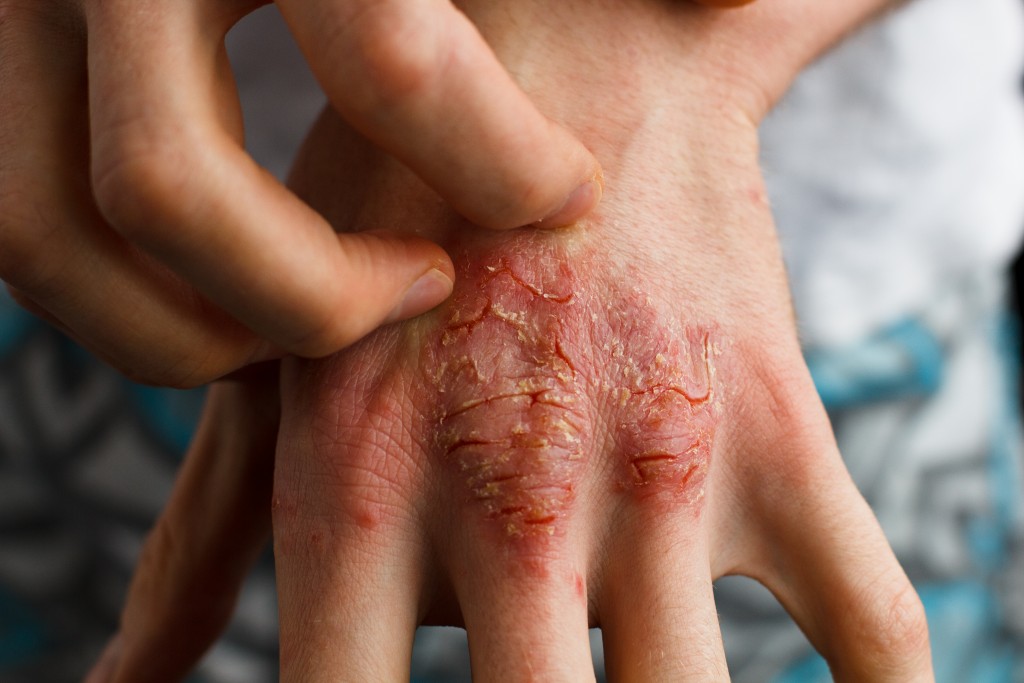Parents of children diagnosed with celiac know how challenging celiac can be. From managing what your children eat to dealing with sensitivity issues, parents also have to deal with the symptoms that come with celiac. The symptoms of celiac usually appear at six months or two years of age, when the child is likely to have his first intake of gluten. Symptoms may include but are not limited to the following:
- diarrhea
- vomiting
- irritability
- poor appetite
- bloating
- weight loss
- poor physical development
Your doctor will perform a screening to detect if your child has celiac. You will then have to see a gastroenterologist who will perform a biopsy on your child’s small intestine.
How is Celiac Treated?
Avoid gluten.
The only way to manage celiac is to avoid gluten. This is not an easy feat because gluten can be found in many foods. It is even more difficult for children. How can you tell a child that he cannot eat pizza, bread, fried chicken, or cereal? However, the only way to heal the small intestine of a person with celiac is to avoid foods with gluten. The great news is, though it may not be easy, it is not that difficult. There are many products in the market that you can buy that are gluten-free, such as cornbread mix, pancake mix, and oats.
Read the label.
You should also read the label before you put certain items in your grocery cart. Be on the lookout for the following food items: sausages, luncheon meats, rice mixes, and instant cocoa. Another thing to take note of is that wheat-free does not immediately mean gluten-free. These products that claim to be wheat-free may still have grains that contain gluten in them.
Avoid cross-contamination.
Another thing that parents of children with celiac should watch out for is cross-contamination. The food may not contain gluten, but it could have been contaminated. An ingredient that came into contact with gluten can cause cross-contamination. For example, you used the same toaster to prepare your food and the food of your child with celiac. The crumbs left by your food may come into contact with the food of your child, hence contaminating it with gluten.
It is best to have separate condiments and toasters for your child with celiac.
Introducing Gluten-Free Foods To Your Child
It is important to consult with your child’s pediatrician or nutritionist before you embark on a gluten-free diet. They can help you come up with a gluten-free meal pan but will still give your growing child the nutrients that they need.
Here are some gluten-free foods that you can give to your kids.

1. Fruits and Vegetables. Give your child home-prepared mushy or diced fruits and vegetables, such as avocadoes, oranges, bananas, apples, peaches, pears, cauliflower, broccoli, spinach, kale, potatoes, mushrooms, and carrot among many others. Be wary when buying canned, frozen, dried, and pre-chopped fruits and vegetables. They may be cross-contaminated or they may contain added flavorings that contain gluten.
2. Dairy Products. You can give your child dairy products, but make sure to check the label that they are gluten-free. Milk, butter, and cheese are generally gluten-free. Be sure to check the label when you buy flavored milk and yogurts, cheese spreads, and ice cream. They can be mixed with ingredients and additives that contain gluten. Avoid giving your kids malted milk drinks.
3. Sauces and Condiments. Apple cider vinegar, tamari, and white vinegar are safe. Be sure to double-check the following condiments and sauces before you give them to your children: ketchup, mustard, tomato sauce, pickles, mayonnaise, salsa, gravy, and salad dressing. Avoid teriyaki sauce, wheat-based soy sauce, and malt vinegar.
4. Proteins. Protein is vital to the growth of your child. It builds and repairs the body tissues. Give your kids legumes, nuts, seeds, fresh beef, pork, fresh chicken, fresh fish, and tofu. Steer clear of breaded poultry, meat, and fish, or any food with wheat-based soy sauce.
The following are okay as long as you check the label to ensure that they are gluten-free: hot dogs, bacon, vegetarian burgers, ground meats, and microwavable dinners.
5. Special Gluten-Free Food Mixes. There are food mixes specially created for a gluten-free diet. Gluten-free pancake mixes, brownie mixes, and cornbread mixes allow you to prepare delicious breakfast and snacks that are safe for your kids. There are also gluten-free tortillas, quesadillas, and crackers available. Be sure to round up your nearby grocery for gluten-free food staples to make the transition easier for you and your child.
Being diagnosed with celiac does not mean your child has to suffer and miss on the good things in life. Your child can still have a happy and normal childhood. Be sure to get everyone on board on your child’s diet to avoid any accidents. Their diet does not have to limit how they will enjoy their lives. Make your child understand that what they cannot eat does not define who they are.




